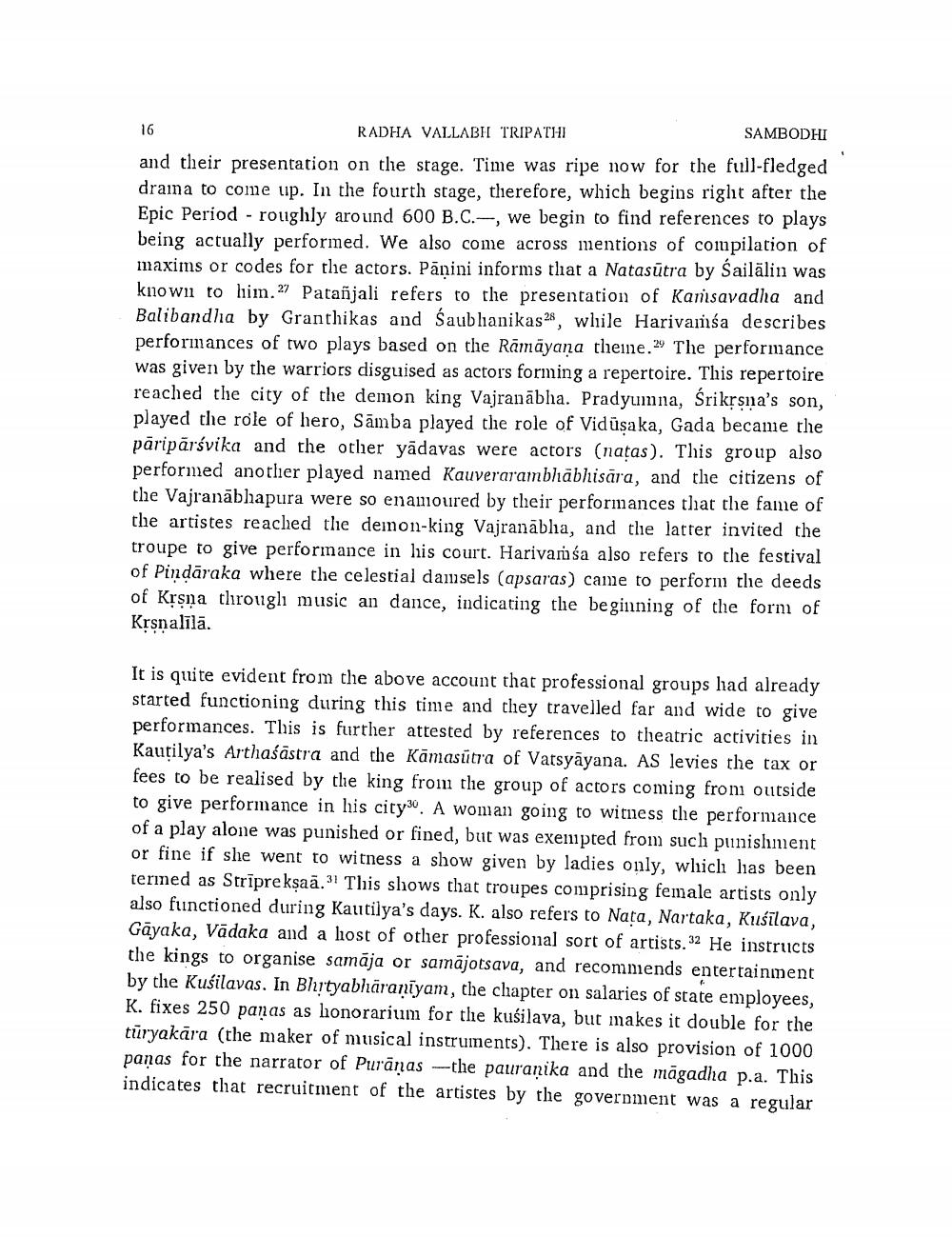________________
RADHA VALLABH TRIPATHI
SAMBODHI and their presentation on the stage. Time was ripe now for the full-fledged draina to come up. In the fourth stage, therefore, which begins right after the Epic Period - roughly around 600 B.C., we begin to find references to plays being actually performed. We also come across mentions of compilation of maxims or codes for the actors. Panini informs that a Natasūtra by Sailälin was known to him.27 Patañjali refers to the presentation of Kamsavadha and Balibandha by Granthikas and Saublianikas28, wliile Harivamsa describes performances of two plays based on the Rāmāyana theine.29 The performance was given by the warriors disguised as actors forming a repertoire. This repertoire reached the city of the demon king Vajranābha. Pradyumna, Srikęsna's son, played the role of hero, Sāmba played the role of Viduşaka, Gada became the pāri pārsvika and the other yādavas were actors (natas). This group also performed another played named Kauverarambhäbhisāra, and the citizens of the Vajranābhapura were so enamoured by their performances that the fame of the artistes reached the demon-king Vajranāblia, and the latter invited the troupe to give performance in his court. Harivansa also refers to the festival of Pindāraka where the celestial damsels (apsaras) came to perform the deeds of Krsna tlırouglı music an dance, indicating the beginning of the form of Krşnalīlā.
It is quite evident from the above account that professional groups had already started functioning during this time and they travelled far and wide to give performances. This is further attested by references to theatric activities in Kautilya's Arthaśāstra and the Kamasutra of Vatsyāyana. AS levies the tax or fees to be realised by the king from the group of actors coming from outside to give performance in his city30. A woman going to witness the performance of a play alone was punished or fined, but was exempted from such punishment or fine if she went to witness a show given by ladies only, which lias been terined as Stripre kşaā.3 This shows that troupes comprising female artists only also functioned during Kautilya's days. K. also refers to Nata, Nartaka, Kuśīlava, Gāyaka, Vadaka and a liost of other professional sort of artists. 32 He instructs the kings to organise samāja or samājotsava, and recommends entertainment by the Kuśilavas. In Blurtyabharaniyam, the chapter on salaries of state employees, K. fixes 250 panas as honorarium for the kusilava, but makes it double for the turyakāra (the maker of musical instruments). There is also provision of 1000 panas for the narrator of Purānas ---the pauranika and the magadha p.a. This indicates that recruitment of the artistes by the government was a regular




